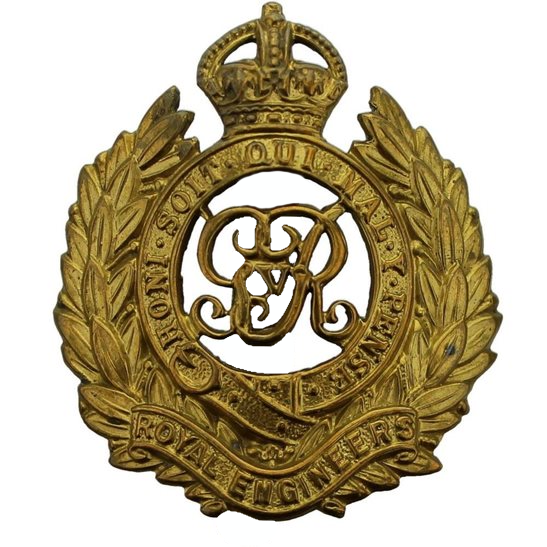Personal Details
Born: 9 December 1889 in Whitchurch, Shropshire and baptised 5 January 1890 at St. Alkmund`s Parish Church, Whitchurch.
Family: He was the third of five children born to George Gregory, a joiner, and his wife Hannah. He married Millicent Evelyn Byland in 1916 in Birkenhead, Cheshire. The couple had three children, Millicent Esme, George Andre and Roy Evelyn.
Residence: At the time of his baptism in 1890 his family were living in Pepper Street, Whitchurch, but a year later in 1891 they had moved to West End, Whitchurch. By 1901 their home was Oddfellows Cottages, Whitchurch. According to Bennett`s 1916 Business Directory for Whitchurch his mother, Hannah, was living at 29, St. Mary`s Street, Whitchurch, the address given for George on the 1919 Absent Voters` List. However an address of ℅ Star Supply, Trelawny Square, Flint, Flintshire was given for him on his Pension Card and 13 Stamfordham Drive, Garston, Liverpool on his medal card. By 1934 he had moved with his family to Surrey, firstly to Guildford and then to Epsom. In 1939 his address was 31 Diredene Gardens, Epsom, Surrey.
Employment: In 1939 his occupation was described as a chef and in 1940 on the probate records for his father as a cooked food manufacturer.
Died: In 1957 in Rochford, Essex, aged 67.
Military Details
Regiment: Royal Engineers (previously Royal Engineers and Royal Welsh Fusiliers)
Rank: Sapper
Service Number: 449207 (previously 49796 and 2168)
Date of Enlistment: 1915 (from Whitchurch Herald 27 February 1915)
Date of Discharge: 14 February 1919
Reason for Discharge: Not known
George was awarded the Campaign Medals (1914/15 Star, British War Medal and Victory Medal).

The 1914 Star (also known as 'Pip') was authorised under Special Army Order no. 350 in November 1917 and by an Admiralty Fleet Order in 1918, for award to officers and men of the British and Indian Expeditionary Forces who served in France or Belgium between 5 August and midnight of 22–23 November 1914. The former date is the day after Britain's declaration of war against the Central Powers, and the closing date marks the end of the First Battle of Ypres.
The 1914–15 Star (also known as 'Pip') was instituted in December 1918 and was awarded to officers and men of British and Imperial forces who served against the Central European Powers in any theatre of the Great War between 5 August 1914 and 31 December 1915. The period of eligibility was prior to the introduction of the Military Service Act 1916, which instituted conscription in Britain.
The British War Medal (also known as 'Squeak') was a silver or bronze medal awarded to officers and men of the British and Imperial Forces who either entered a theatre of war or entered service overseas between 5th August 1914 and 11th November 1918 inclusive. This was later extended to services in Russia, Siberia and some other areas in 1919 and 1920. Approximately 6.5 million British War Medals were issued. Approximately 6.4 million of these were the silver versions of this medal. Around 110,000 of a bronze version were issued mainly to Chinese, Maltese and Indian Labour Corps. The front (obv or obverse) of the medal depicts the head of George V. The recipient's service number, rank, name and unit was impressed on the rim.
The Allied Victory Medal (also known as 'Wilfred') was issued by each of the allies. It was decided that each of the allies should each issue their own bronze victory medal with a similar design, similar equivalent wording and identical ribbon. The British medal was designed by W. McMillan. The front depicts a winged classical figure representing victory. Approximately 5.7 million victory medals were issued. Interestingly, eligibility for this medal was more restrictive and not everyone who received the British War Medal ('Squeak') also received the Victory Medal ('Wilfred'). However, in general, all recipients of 'Wilfred' also received 'Squeak' and all recipients of The 1914 Star or The 1914/1915 Star (also known as 'Pip') also received both 'Squeak' and 'Wilfred'. The recipient's service number, rank, name and unit was impressed on the rim.

